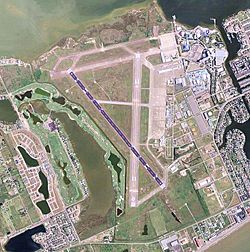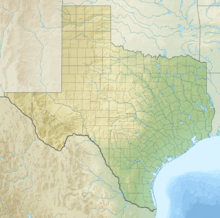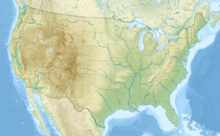Scholes International Airport at Galveston facts for kids
Quick facts for kids
Scholes International Airport at Galveston
(former Galveston Army Air Field)
|
|||||||||||||||
|---|---|---|---|---|---|---|---|---|---|---|---|---|---|---|---|
 |
|||||||||||||||

USGS 2006 orthophoto
|
|||||||||||||||
| Summary | |||||||||||||||
| Airport type | Public | ||||||||||||||
| Owner | City of Galveston | ||||||||||||||
| Serves | Galveston, Texas | ||||||||||||||
| Elevation AMSL | 6 ft / 2 m | ||||||||||||||
| Coordinates | 29°15′55″N 094°51′38″W / 29.26528°N 94.86056°W | ||||||||||||||
| Website | www.GalvestonAirport.com | ||||||||||||||
| Map | |||||||||||||||
| Runway | |||||||||||||||
|
|||||||||||||||
| Statistics | |||||||||||||||
|
|||||||||||||||
|
Source: Federal Aviation Administration
|
|||||||||||||||
Scholes International Airport at Galveston (GLS) is an airport located about three miles southwest of Galveston, Texas. It's in Galveston County, Texas, in the United States. This airport is mainly for private and charter flights, meaning it doesn't have regular passenger flights like bigger airports. Its runways are big enough for large planes, even ones like the Boeing 767-200.
Contents
About Scholes International Airport
The City of Galveston runs and takes care of Scholes International Airport. It's a general aviation airport, which means it's mostly used for private planes, flight training, and business flights.
In the past, several airlines used to fly from Galveston:
- From the 1930s to the 1950s, Braniff flew to Houston.
- Trans-Texas Airways (later Texas International Airlines) flew here until 1972.
- Later, Houston Metro Airlines used smaller planes to fly to Houston Intercontinental Airport.
- In the mid-1980s, Texas Airlines also offered flights to Houston.
The airport is always planning for the future. They are looking at possibly bringing back airline service. They also want to make it easier for business planes and helicopters used by the oil industry. The main runway might even be made longer to fit more large aircraft.
Airport Operations and Services
Scholes International Airport has air traffic control for 12 hours a day, from 6 AM to 6 PM. When the control tower is closed, the airport becomes "uncontrolled," but pilots can still get help from Houston TRACON.
The airport has modern lights and navigation tools to help planes land safely in all kinds of weather. It also has a special fire and rescue team ready for emergencies.
The airport is quite large, covering about 1,200 acres. It offers many services:
- A main terminal building.
- A place to refuel planes 24 hours a day.
- Weather services available all the time.
- A U.S. Customs agent on call for international flights.
- Advanced navigation systems for safe landings.
Many military planes stop here to refuel because there's a special training area nearby in the Gulf of Mexico. It's also where air ambulances bring patients to the Shriner's Burn Hospital for Children.
More than 220 aircraft are based at Scholes Airport. Over 50 of these are helicopters used by companies like Bristow, Era, and PHI. These helicopters support the oil industry in the Gulf of Mexico.
History of Galveston Airport
People started using the land where the airport is now for flying planes in the early 1920s. Early pilots like Bob Scholes and Fen Waters would give rides and perform air shows. At first, they used East Beach as a runway. Later, Fen Waters was allowed to use the land that is now the airport. It used to be a cattle ranch and watermelon farm.
The airport officially became the Galveston Municipal Airport in 1931. For a short time in 1938, it was called Corrigan Airport. This was named after Douglas Corrigan, a pilot from Galveston who was famous for flying the "wrong way" across the Atlantic Ocean.
World War II Era
During World War II, the airport became a military base for the United States Army Air Corps. It was called "Galveston Army Air Field." The Army built three long, hard-surface runways, each 6,000 feet long, to handle military planes.
In January 1943, the 46th Bombardment Group used the base to fly Douglas A-20 Havoc planes. They helped look for submarines in the Gulf of Mexico. Later, the 10th Antisubmarine Squadron took over, flying Lockheed Venturas.
The base was also used to train new gunners for fighter-bomber planes. They would practice shooting at targets towed to a gunnery range nearby. The military spent about $7 million on the base, and at its busiest, about 2,500 people worked there.
The base closed on November 15, 1945. The City of Galveston got the airport back. The current terminal building was finished in 1949. The airport was then renamed Scholes Field to honor Robert "Bob" Scholes, an early pilot and the airport manager.
Airport Facilities
Scholes International Airport covers about 966 acres (391 hectares) of land. It is only 6 feet (2 meters) above sea level.
The airport has two main runways:
- Runway 14/32 is 6,000 feet long and 150 feet wide. It's made of asphalt and concrete.
- Runway 18/36 is 6,001 feet long and 150 feet wide. It's made of concrete.
In the year ending June 3, 2011, the airport had over 61,000 aircraft operations. This means planes took off or landed about 167 times each day. Most of these were air taxi services (55%) or general aviation flights (44%). Only a small number (1%) were military flights.
As of August 2017, 109 aircraft were based at the airport. These included:
- 75 single-engine planes
- 15 multi-engine planes
- 2 jet planes
- 14 helicopters
- 1 glider
- 2 ultralight aircraft
Types of Aircraft at GLS
You'll often see small private planes and business jets at Scholes International Airport.
However, the most common aircraft are the helicopters that support the offshore oil and gas industry in the Gulf of Mexico. These large helicopters belong to companies like:
- Bristow U.S. LLC: They fly many types of helicopters, including Sikorsky S-92s, Sikorsky S-76s, and Agusta Westland AW 139s. Bristow Group is one of the biggest helicopter operators in the world.
- ERA: They use helicopters like Agusta A-119s and Eurocopter EC-135s.
- PHI (Petroleum Helicopters Inc.): Their fleet includes Bell JetRangers and Sikorsky S-76s.
Lone Star Flight Museum
The Lone Star Flight Museum was located at Scholes International Airport from 1985 until 2017. This museum had a collection of historic "warbirds" that could still fly. Some of these famous planes included:
- Vega Boeing B-17 Flying Fortress
- North American B-25 Mitchell Bomber
- Douglas SBD Dauntless
- Republic P-47 Thunderbolt
- Vought F4U Corsair
- General Motors (Eastern Aircraft) TBM Avenger
- Grumman F6F Hellcat
- Grumman F8F Bearcat
- General Motors FM-2 Wildcat
- Supermarine Spitfire
- Hawker Hurricane
- North American AT-6 Texan
- Beech AT-11 Kansan
- Cessna AT-17 Bobcat
- Stinson L-5
- Douglas DC-3 Sky Train
- Stearman PT-17
In September 2017, the Lone Star Flight Museum moved to Ellington Airport, which is also in Texas.




